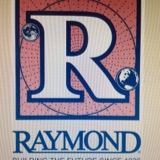Information
-
Project Name / Raymond Job#
-
Client / Project Site
-
Conducted on
-
Prepared by
-
Project Location
-
On-site Personnel
Safety Assessment
1. PPE (Personal Protective Equipment)
-
1.1 Lack of, or inadequate PPE (including sun protection)
-
1.2 Respiratory protection/equipment?
2. Safety Documents/Postings
-
2.1 OSHA posters/permits/workers comp postings?
-
2.2 Lack of, or inadequate system to review SWP/IIPPas needed?
-
2.3 Lack of/or inadequate Site Safety Plan?
-
2.4 Lack of, or inadequate, routine inspections, monitoring, audits?
-
2.5 Lack of/or inadequate Job Hazard Analysis (JHA) for high- risk work?
-
2.6 Lack of/or inadequate training, licenses, skills, experience?
-
2.7 P.A.T./LASER/Fireproofing signage posted?
3. Positions & Actions of People
-
3.1 Lack of training in risk controls and safe lifting/team lifting techniques?
-
3.2 Lack of identification/assessment of hazardous manual tasks?
-
3.3 Inadequate risk controls? (examples: no job rotation, lighter loads, trolleys, lifting equipment, etc)
4. Equipment (chop saws, drills, mixers, pumps, etc.)
-
4.1 Lack of inspection regime?
-
4.2 Unlicensed operators?
-
4.3 Lack of safe work instructions?
-
4.4 Unsafe or damaged equipment? (including missing or damaged guards, relief/safety devices)
-
4.5 Incorrect equipment for job? (e.g. grinding discs for cutting)
-
4.6 Unsafe or incompatible attachments used with equipment?
-
4.7 Unsafe safe operation, clean-up and maintenance?
-
4.8 Is Fire Protection available?
5. Slips, Trips & Falls
-
5.1 Unprotected/unsecured/unmarked holes or depressions (>2" dia)?
-
5.2 Trip Hazards?
6. Scaffolds
-
6.1 Mobile scaffold wheels locked?
-
6.2 Lack of inspection protocol for scaffold?
-
6.3 Unsafe or incomplete scaffold (missing handrails, planks, etc.)?
-
6.4 Incompatible scaffold components? Unlabelled or do not meet SAIA standards?
-
6.5 Safe Work Load (SWL) exceeded? (tools, stored materials, number of persons)
7. Working at Heights
-
7.1 Fall risks (6 ft. or more, including voids, pits, and trenches)?
-
7.2 Unprotected change of elevation >18"?
-
7.3 Unsafe or incomplete edge protection?
8. Fall Protection
-
8.1 Lack of inspection protocol for equipment?
-
8.2 Inadequate training for PFAS?
-
8.3 Unsafe or damaged harness, lanyards, hooks or equipment?
-
8.4 Unlabelled or does not meet Manufacturers standards?
-
8.5 Unsafe or uncertified anchor points?
-
8.6 Is PFAS stored properly?
9. Ladders
-
9.1 Unsafe or damaged ladders?
-
9.2 Unsafe positioning of ladders?
-
9.3 Ladder not properly secured?
-
9.4 Is all labeling attached and legible?
10. Lifting Equipment (scissor, boom, fork)
-
10.1 Lack of daily inspection protocol?
-
10.2 Unlicensed operators?
-
10.3 Is Operators Manual on equipment?
-
10.4 Does Forklift have a Fire Extinguisher attached?
-
10.5 Unsafe operation observed?
11. Electrical Hazards
-
11.1 Unsafe/damaged electrical cords? (damaged, cut, frayed, etc.)
-
11.2 Lack of GFCI protection?
-
11.3 Hazardous issues ( contact with overhead electrical lines, near water, overloaded, near hazardous chemicals)?
-
11.4 Trip Hazard?
12. Work Environment
-
12.1 Inadequate housekeeping?
-
12.2 Lack of/or inadequate amenities? (toilets, wash areas, lunch rooms, etc)
-
12.3 Insufficient lighting?
-
12.4 Lack of, or inadequate noise/ vibration control?
-
12.5 Is there adequate & Safe Access & Egress?
-
12.6 Air quality acceptable?
13. Emergency Response
-
13.1 Lack of, or inadequate first aid kits aid equipment for site?
-
13.2 Lack of drinking water available? (2 gallons, per person, per 8 hour shift)
-
13.3 Emergency procedures, available, reviewed and displayed at site?
-
13.4 Fire Extinguishers secured/available/functioning/inspected?
14. Traffic Management
-
14.1 Inadequate controls and Traffic Management Plan (TMP) I place? (physical barriers, bollards, speed limits, flashing lights, spotters, etc)
15. Hazardous Chemical (including fuel and oil)?
-
15.1 Inadequate spill containment equipment?
-
15.2 Unsuitable/missing/damaged Fire protection (fire extinguisher)
-
15.3 Safety Data Sheets not accessible on site?
-
15.4 Unsafe storage location? (e.g. flammables near ignition sources, spills could enter stormwater drains, etc)
-
15.5 Insufficient ventilation?
16. Environmental Hazards
-
16.1 SWPPP
-
16.2 PACM/PLCM-ACM/LCM (Asbestos/Lead)?
-
16.3 Lack of/or inadequate, dust suppression system?
17. Miscellaneous
-
17.1 Safe / At Risk?
Notes, Comments & Corrective Actions
Sign Off
-
On site representative
-
Auditor's signature KIRK WILLIAMSON, The RAYMOND Group Director of Safety






